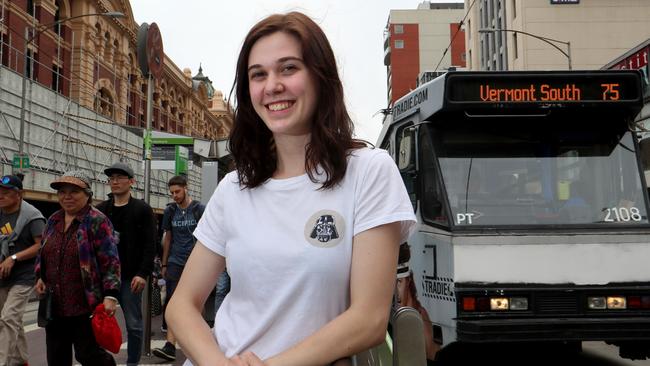City folk living longer ... with mortgage stress and traffic jams
Live longer, but in traffic and mortgage stress? Or be regional but have lower life expectancy? How do our cities stack up? GRAPHICS

A comparison of Australia’s 22 largest cities shows families in metropolitan areas live longer but spend more time in traffic jams and have higher mortgage stress compared with regional cities.
A new population snapshot released today shows western Sydney is hardest hit by housing affordability, with one in 10 households spending 30 per cent or more of weekly income on mortgage repayments.
The median dwelling price in Sydney is $930,000, and $711,000 in western Sydney, but families looking for cheaper options in some regional centres are confronted with lifestyle trends, including higher obesity rates and poorer communities.
Life expectancies are highest in the capital cities of Melbourne, Sydney, Perth and Canberra, while the multicultural flavour of local communities is most heavily concentrated in Sydney and Melbourne.
The cities with the smallest ratio between dwelling price and annual income include Mackay, Townsville, Darwin, Launceston and Albury-Wodonga (where prices are 3.3 to five times annual earnings) and compare to a ratio of 9.3 on the Sunshine Coast, the highest in the nation, and Wollongong, 8.4.
The areas with the highest proportion of households under mortgage stress include western Sydney, Perth, Sydney, Melbourne and the Gold Coast/Tweed Heads region, where the numbers range from 9.4 to 6.8 per cent of households under stress.
Along with higher housing costs, commute times are another major drawback in major cities with the cities framework finding that only 58.2 per cent of jobs in Sydney, 60.2 per cent in Melbourne and 65.3 per cent in Brisbane are accessible by car in less than 30 minutes.
By contrast, 100 per cent of jobs are accessible by car in less than 30 minutes in Wollongong, Launceston, Bendigo, Albury-Wodonga, Cairns, Ballarat and Mackay. Peak-hour delays are most dramatic in Sydney with the percentage increase in car-trip duration time hitting 67.5 per cent in peak-hour.
Dwellings with access to public transport are highest in Adelaide and Melbourne at 36.5 and 36.2 per cent, with Sydney recording the highest proportion of journeys to work by public transport at 22.7 per cent followed by Melbourne at 15.5 per cent.
Melbourne student Paige Joustra, 20, said the local transport was “all right”, but when a train or tram broke down there was no reliable back-up.
“If everyone goes on trams it’s very busy and crazy,” she said. “When it’s 30C, good luck if you find an air-conditioned tram.”
According to the new framework being released today by Assistant Minister for Cities Angus Taylor, towns with the highest share of low-income households include the regional centres of Ballarat (24.7 per cent) and Bendigo (23.4 per cent) as well as the capital cities of Hobart (23.1 per cent) and Adelaide (22.6 per cent).
More than a quarter of households in Launceston, Tasmania, (27.1 per cent) are on the lowest-income quintile along with one-fifth in Mackay (20.7 per cent) and Cairns (20.6 per cent).
Higher obesity rates are also found in the regional hubs of Toowoomba, Albury-Wodonga, Mackay, Ballarat and Launceston where between 32.7 and 36.3 per cent of all adults are badly overweight.
Suicides rates are also dramatically higher in the regions. The figures show 19.5 people per 100,000 take their own lives in Mackay. Cairns has 19.4, compared with only 9.8 suicides per 100,000 people in Sydney, 10.3 suicides in Melbourne and 10.7 suicides in Canberra.
Unemployment varies from region to region. Townsville had the worst result with an unemployment rate of 9.12 per cent while the best results were in Darwin (3.4 per cent) and Ballarat (3.79 per cent).
There was also strong employment growth in Ballarat, Toowoomba, Cairns, Mackay, and Townsville.
The figures provide a snapshot of trends across Australia and form part of Malcolm Turnbull’s “Smart Cities Plan”.
The new government framework was prepared to better guide and target policy at a federal, state and local government level by identifying priority areas of need.
Additional reporting: Tessa Akerman



